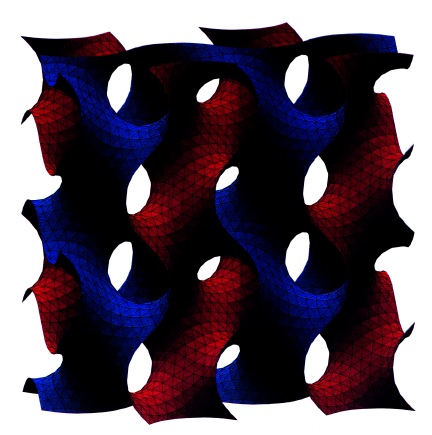To mark the growing popularity of science-based blogs, here’s a quick roundup of some blogs devoted to nanotechnology. Nanotechnology means many things to different people, and this diversity of points of view is reflected in the wide variety of perspectives on offer in the blogs.
From the point of view of business and the financial markets, TNTlog comes from Tim Harper, of the European consulting firm Cientifica. His posting frequency has dropped off recently, which is a pity, since this is a blog that manages to be both entertaining and well-informed, with a healthy scepticism about some of the wilder claims made on behalf of the “nanotechnology industry”. The web-portal nanotechnology.com hosts a contrasting pair of blogs. blog | nano, by Darrell Brookstein, is at the shriller end of the nanobusiness spectrum, while Steve Edwards’s blog combines commentary on nano financial markets with the odd extract from his (rather good) book – The Nanotech Pioneers.
Among blogs written by academics, there are those that come from scientists working inside the field, and some from social scientists whose interests run more towards the social issues surrounding nanotechnology. In the first category we have Nanoscale Views, by academic nanophysicist Doug Natelson. This combines capsule reviews of new condensed matter preprints and conference reports with more general observations about life as a junior faculty, and is at quite a high technical level. Martyn Amos is a computer scientist; his blog covers issues such as synthetic biology and chemical computing. The authors of Molecular Torch seem to be keen to keep their identities quiet, but from what they cover I’m guessing they work in the field of nanochemistry, with a particular interest in quantum dots. If you want to know what Soft Machines is about, just look around.
From the social science side of things, David Berube’s Nanohype casts a sceptical eye on the scene, leavening fairly detailed commentary on various reports and conferences with his enjoyably acerbic humour. Nano|Public, Dietram Scheufele, similarly covers public engagement issues from an academic point of view. Nanotechbuzz by George Elvin, is more general in its coverage, which reflects the interests of its author, an architecture professor with interest the relationship between nanotechnology and design.
A couple of blogs reflect the views of those interested in Drexler’s vision of molecular nanotechnology. The current market leader in the faith-based end of this space is Responsible Nanotechnology, from the Center for Responsible Nanotechnology, aka Mike Treder and Chris Phoenix. This pair have the most impressive output in terms of sheer volume. Their analysis is predicated on the unsupported assertion that desktop nanofactories could be with us in 10-15 years; any dissent from this view is met, not with rational argument, but with accusations of bad faith or scientific fraud. Nanodot, from the Foresight Nanotech Institute’s Christine Peterson, represents the more acceptable face of Drexlerism, combining reporting on current nanoscience developments and commentary about social and economic issues, with discussion of longer-ranged prospects, albeit in a framework of thorough-going technological determinism.
Finally, we have a couple of blogs written by professional writers. Howard Lovy’s Nanobot was a useful source of nano- commentary, particularly strong on charting the influence of nanotechnology on popular culture, before Howard’s move to the darkside of public relations led to a quiet period. Nanobot has recently gently restarted. A very welcome newcomer is homunculus from my favourite science writer, Philip Ball. The scope of homunculus goes well beyond nanotechnology, covering aspects of chemistry and physics ranging from the application of statistical mechanics to financial markets to the historical links between chemistry and fine arts. His most recent post contains much of the useful background information that didn’t make it into his recent news piece for Nature about the potential neurotoxicity of nanoscale titania.
My apologies to anyone I’ve missed out.
